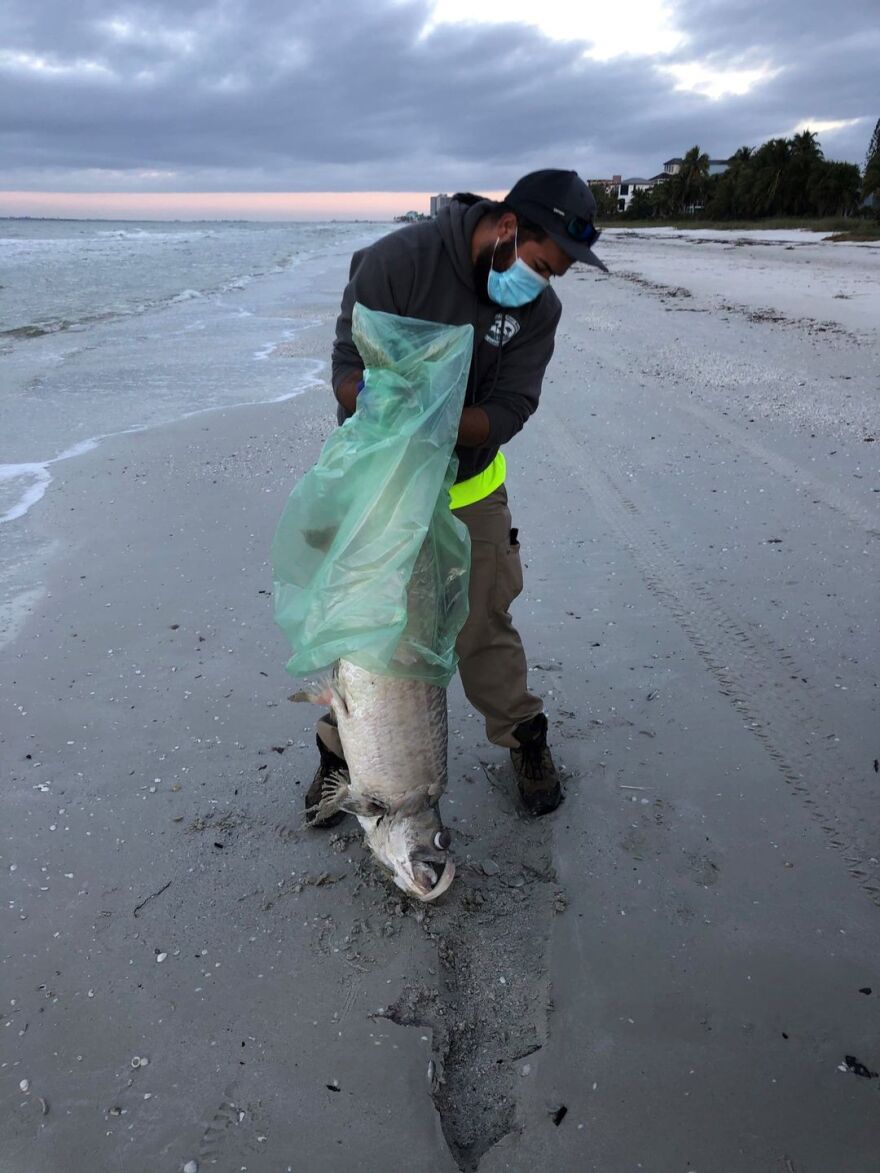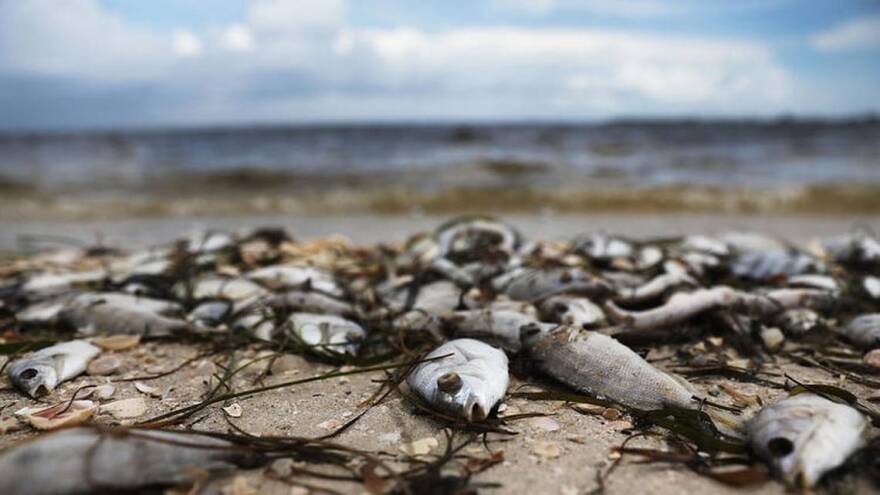The U.S. Army Corps of Engineers plans to cut back on discharges from Lake Okeechobee beginning this weekend, ending months of polluted releases to the St. Lucie Estuary and returning to more normal flows down the Caloosahatchee River to the Gulf Coast.
The decision comes as red tide conditions worsen on the Gulf Coast, where dead fish have littered beaches and toxic levels of the algae have been detected from Sanibel to Marco Island.
WLRN is here for you, even when life is unpredictable. Local journalists are working hard to keep you informed on the latest developments across South Florida. Please support this vital work. Become a WLRN member today. Thank you.
The move was part of an overall strategy to scale back releases once the dry season settled in and not prompted by the red tide's appearance, Col. Andrew Kelly said Thursday.
“We're going down about a third of a foot lower than it was a month ago,” he said in a briefing.
The Corps began releasing lake water — blamed for worsening coastal algae blooms because the water contains high levels of nitrogen and phosphorus from farm and urban run-off — in October. For weeks, Kelly said the agency had hoped to avoid the discharges but a prolonged and record-breaking rainy season, that drenched much of South Florida, pushed up lake levels that began threatening the 1940s-era Herbert Hoover dike.
Even more than two months into the traditional start of the dry season, the region’s vast water conservation areas remain nearly a foot or more above normal.
Around Pine Island Sound, and the estuary at the mouth of the Calooshatchee, polluted runoff nearly doubled, said John Cassani, director of Calusa Waterkeeper in Fort Myers.
“We're seeing massive fish mortality right now. And I got a bad feeling marine mammals and sea turtles are not far behind,” Cassani said. “It's just an awful, awful situation on the heels of a historic red tide event just two years ago. All these communities are trying to recover and it's just creating insult after insult to these ecosystems.”

In October, after Calusa Waterkeeper and two other environmental groups sued over the 2018 red tide, a federal judge ordered the Corps to assess damage caused by the releases. The Corps hadn’t examined lake releases since 2007, after Hurricane Katrina prompted a nationwide safety review of levees, dams and other flood protection. That led to the current management plan, but did not factor in environmental protection.
A Corps spokesman said Friday the agency has decided not to appeal the judge’s order and will begin working with the U.S. Fish and Wildlife Service and National Marine Fisheries Service to determine how releases worsen algae blooms.
High levels of red tide first began appearing in Gulf waters in December, according to monitoring by the Florida Fish and Wildlife Conservation Commission. Red tides get seeded offshore where the algae that produces them lives on the ocean floor. But winds and currents can blow them onshore, where pollution flushed off the coast can trigger toxic blooms.
Between 2017 and 2018, one of the worst red tides on record blanketed Gulf shores, finally fading in 2019. Businesses shut down and coastal communities complained bitterly, prompting the Corps to reassess how it manages the lake.
“Almost every year, 2016, 2017, 2018 and again in 2020, we're having these unanticipated high extreme rainfall events that have generated the need for the Corps to release excessive volumes of lake water, which are heavily polluted,” Cassani said. “There hasn't been a good length of time for either the near-coastal communities or the estuary to actually recover.”
The Corps decided to keep levels lower during the last dry season to avoid releases, but that drew opposition from farmers and utilities who draw water from the lake.
Kelly said Wednesday he’d announce the plan for how the Corps manages the lake during the ongoing dry season in February. So far, projections show lake levels high, he said, so the agency needs to factor in a La Niña drier-weather pattern — forecasted in December to continue through the winter.
“So we're still uncomfortable about a lake level at the end of the dry season,” he said. “Fourteen feet, that’s still higher than than we want to see.”





